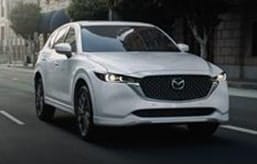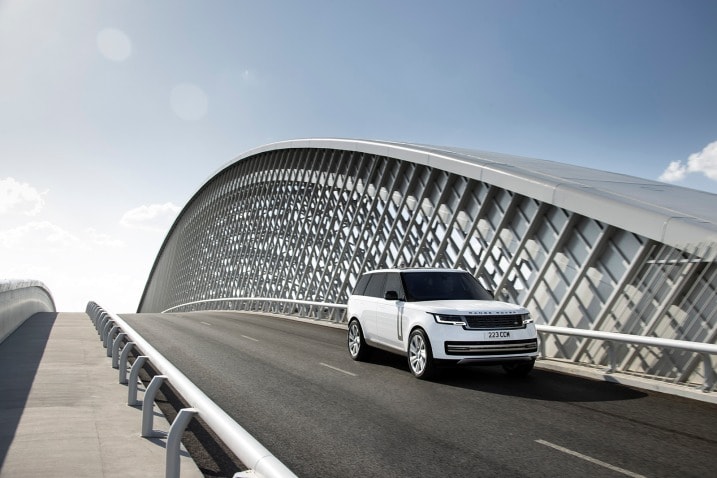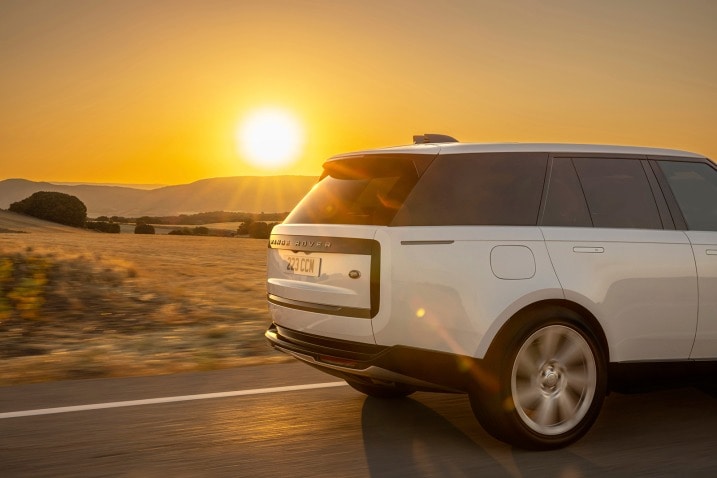- Effortless power delivery from the new plug-in hybrid system
- Double the fully electric range of the previous-generation PHEV
- Part of the fifth Range Rover generation introduced for 2022
Prepare to Be Wowed: 2023 Land Rover Range Rover PHEV First Drive
Big 'ol battery is just what the doctor ordered
The 2023 Land Rover Range Rover PHEV has a lot going for it. For one thing, we've already rated the standard gas-powered Range Rover highly among large luxury SUVs for its wonderful interior and comfortable ride. For another, the launch of a new plug-in hybrid version promises a larger onboard lithium-ion battery and more fully electric driving range than its predecessor. Combine those two elements and you have the recipe for a standout in the class, as we learned during a recent turn behind the wheel.
What is the Range Rover PHEV?
The Range Rover PHEV, also known as the P440e, is a plug-in hybrid version of the standard Range Rover SUV. Equipped with both an engine and a battery that powers an electric motor, the Range Rover PHEV can drive under gasoline-electric power, like any other hybrid. But it has a party trick: It can travel up to a manufacturer-estimated 48 miles on silent, emission-less electric power alone. This lends it an important distinction — while plush SUVs like the BMW X5, Porsche Cayenne and Bentley Bentayga offer PHEV variants, no plug-in currently offers the EV distance of the Range Rover PHEV, set to arrive in the U.S. later this year with a starting price from $109,875 including destination fee.
What's under the Range Rover PHEV's hood?
Under the hood you'll find the same standard engine as the regular Range Rover: a turbocharged 3.0-liter six-cylinder. The difference is that the P440e PHEV also draws power from a 31.8-kWh battery pack — up from 13.1 kWh in the previous Range Rover PHEV, last sold in 2021.
The battery is a lithium-ion unit, stored underneath the floor of the SUV. That battery provides power to an electric motor integrated within the transmission. In total, the engine and electric motor combine to make 434 horsepower and 405 lb-ft of torque to all four wheels.
How do you charge the Range Rover PHEV?
The charging port is located just forward of the driver's side taillight. From the outside, it looks identical to the gas cap found on the passenger side. Press on the cover to open, and you can insert a charging cord to begin juicing it up. The battery can charge to 100% in five hours on a 7.2-kW Level 2 home charger, according to Range Rover, or to 80% capacity in under an hour using a 50-kW DC fast charger.
How does the Range Rover PHEV drive?
Driving any Range Rover is an occasion, and this is no exception. Climb into the driver's seat — although a more commanding term such as “captain's perch” is also appropriate — and the hybrid system provides an abundance of power at full whack. A feathering glance on the accelerator is met with immediate response from the electric motor, and you're really off to the races once the six-cylinder engine kicks in. The two elements work together splendidly. In addition to familiar driving modes in the standard Range Rover (Dynamic, Comfort, Eco, etc.), there are three selections for the hybrid system: Hybrid keeps both the engine and electric motors operating; EV runs on electric power only; and Save relies on the engine in order to preserve the battery for later use.
Whatever your choice of driving mode, the Range Rover PHEV captures energy through its regenerative brakes while braking or coasting. You don't feel it happening, and thankfully the brake pedal feels responsive and natural under your foot — some electrified vehicles can feel jerky as they slow or stop (a result of the handoff between regenerative and friction brakes), but it's nowhere to be found here. Other components are similarly unaffected. Steering the Range Rover PHEV takes little effort, though it's somewhat lazy to react to your commands. And the additional weight from the heavy onboard batteries — nearly an additional 700 pounds over the gas version — can scarcely be noticed. Range Rover says the PHEV can accelerate from 0 to 60 mph in 5.8 seconds, compared with 6.1 seconds for the standard three-row version measured in Edmunds' testing. From start to finish, the driving experience in the Range Rover PHEV is enhanced, not hampered, by the addition of the hybrid system.
How comfortable is the Range Rover PHEV?
Supremely comfortable. Just as with the standard Range Rover, the Range Rover PHEV is a big, luxurious SUV that often feels like a palace. An air suspension comes standard, providing a cushioned ride across varied surfaces. You can feel it working continuously, wrangling the size and heft of the SUV itself to keep passengers from experiencing cracks and jitters in the road. Perhaps the highlight of the plug-in version is the way it uses electric power to smooth out acceleration. Very often you will not be able to feel or discern transmission shifts when they occur. The same goes for the automatic engine start-stop system. You may find yourself forgetting that some people out there are forced to experience such unpleasantness.
How's the Range Rover PHEV's interior?
The cabin is nearly identical to the interiors of standard versions of the Range Rover we've tested recently — which is a very good thing. The plug-in version offers an upscale interior covered in soft leather surfaces and authentic metal accents. Perhaps the only difference is an EV mode button along the center console to toggle between hybrid modes. In the standard Range Rover, we rate the interior highly for the class, due to excellent build quality and rich materials throughout. One key strength of the Range Rover is its spaciousness, and the PHEV retains it despite the extra batteries it's lugging around. Thankfully you won't miss out on any legroom or headroom by opting for the plug-in.
How's the Range Rover PHEV's tech?
Obviously there is a lot of unseen technology at work under the body of the Range Rover PHEV, but the SUV does a good job of keeping you informed of what's going on. In the driver's information display, the digital tachometer adds an energy gauge to show when you are using EV power versus sending charge back into the battery via regenerative braking. Just below is a small battery icon indicating your remaining juice from zero to 100 percent. There are also menus in the central touchscreen that provide information in greater detail, with animated graphics illustrating how the hybrid system is working at any given moment.
How economical is the Range Rover PHEV?
Range Rover says the plug-in hybrid can drive up to an estimated 48 miles on electric power alone — more than doubling the 18 estimated EV miles in the previous-gen version. In our testing, a three-row version of the standard Range Rover returned 21.3 mpg on our standardized 115-mile test loop of city streets, mountain roads and highway cruising. We expect the Range Rover PHEV to significantly improve upon that figure when we're able to evaluate it.
Edmunds says
The smooth inline-six engine is excellent on its own, and the prospect of a plug-in version is even more enticing. Stay tuned to see when we're able to bring this PHEV into the lab for full testing. In the meantime, consider this likely the Range Rover to get.






 by
by